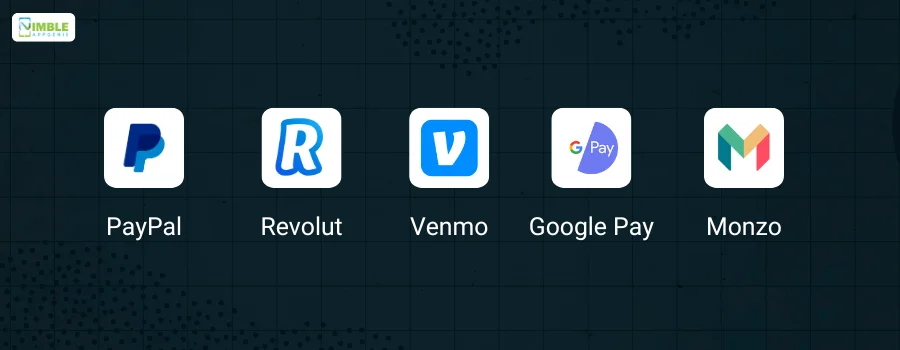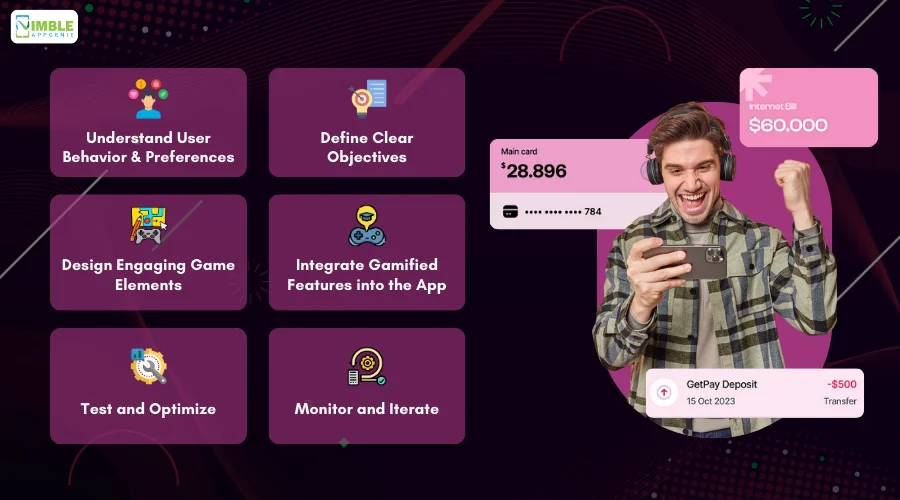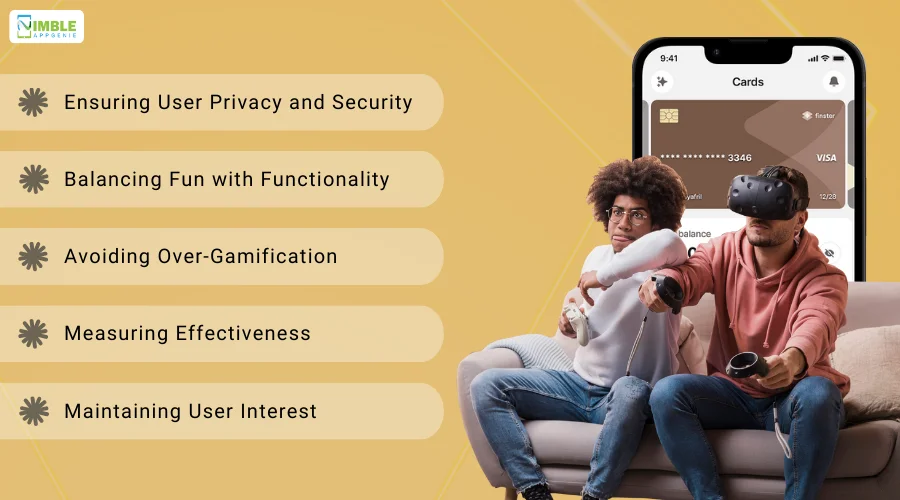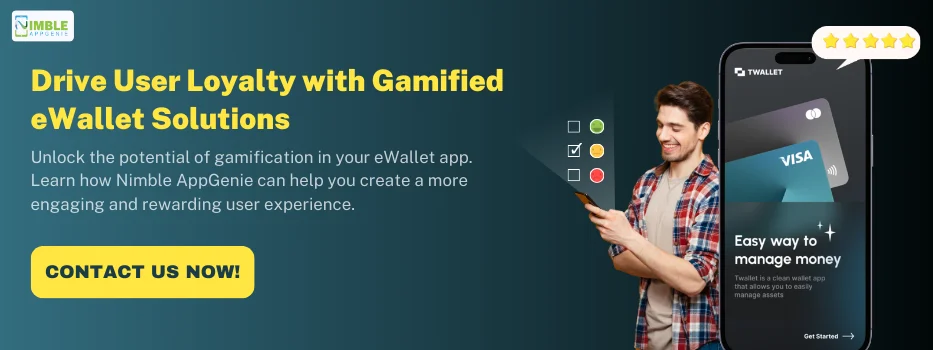Gamification in eWallet apps is revolutionizing the way users engage with digital wallets.
By incorporating game-design elements such as points, badges, challenges, and leaderboards, eWallets can enhance the user experience, drive engagement, and foster loyalty.
This approach not only makes financial tasks more enjoyable but also encourages better financial habits.
In this blog, we will explore the benefits, examples, and implementation strategies of eWallet gamification, along with the potential challenges and considerations to keep in mind.
So let’s get right into it:
Understanding Gamification
Gamification refers to the incorporation of game-design elements and principles in non-game contexts.
It leverages elements such as point scoring, leaderboards, badges, and challenges to engage users and motivate them to achieve their goals.
In the context of eWallet gamification, this approach aims to enhance user experience by making financial activities more engaging and rewarding.
In fact, gamification is a big eWallet app trend.
Users might earn points for completing transactions, receive badges for reaching savings milestones, or participate in challenges that promote financial literacy.
Gamification in digital wallet platforms can significantly boost user engagement and retention.
By making routine financial tasks more interactive and fun, users are more likely to consistently use the app.
This not only enhances customer satisfaction but also drives the app’s overall success.
eWallet Gamification Examples
Gamification in eWallet platforms is transforming the way users interact with their digital wallets.
Here are some notable examples of how gamification is being effectively implemented:

► PayPal’s Rewards System
Apps like PayPal are leveraging this trend.
PayPal incorporates a rewards system that encourages users to engage more with their services.
Users earn points for making transactions, which can then be redeemed for various benefits such as discounts or cashback.
This eWallet gamification strategy boosts user activity and loyalty by offering tangible rewards for continued use.
So, if you are planning to develop an app like PayPal, it’s a good idea to understand this.
► Revolut’s Savings Challenges
Revolut has introduced savings challenges to motivate users to save money.
Users can participate in challenges like “Save $100 in a month” and track their progress through the app.
The gamification in the Wallet app not only encourages better financial habits but also makes the process of saving money more engaging and enjoyable.
Other banking apps like Revolut have also followed the trend.
► Venmo’s Social Feed and Payment Notes
Venmo adds a social element to its digital wallet by allowing users to share payment notes and view a feed of their friends’ transactions.
Gamification in digital wallets creates a sense of community and fun, as users can like and comment on each other’s transactions.
Thus, turning routine payments into social interactions.
This is part of the reason why so many people want to develop an app like Venmo in the first place.
► Google Pay’s Game-Based Promotions
Google Pay frequently runs game-based promotions where users can earn rewards by participating in games or completing specific tasks.
For example, during festive seasons, users might be asked to collect certain items through transactions to win prizes.
This approach to eWallet app gamification not only drives transactions but also adds an element of excitement and competition.
► Monzo’s “Split the Bill” Feature
Before you develop an app like Monzo, let’s see how it gamifies.
Monzo’s “Split the Bill” feature allows users to divide expenses with friends directly through the app.
This feature simplifies group transactions and adds a gamified element by making it easy and fun to manage shared expenses.
The clear, user-friendly interface and quick transaction options enhance user engagement.
These examples showcase how gamification in eWallet platforms can make financial tasks more interactive, engaging, and enjoyable. By incorporating elements of fun and reward, digital wallets can significantly enhance user experience and loyalty.
Benefits of Gamification in eWallet
When you start an eWallet business, integrating gamification can provide a multitude of benefits that significantly enhance the user experience and drive business success.
Here are some of the key advantages:
![Benefits_of_Gamification_in_eWallet[1]](https://www.nimbleappgenie.com/blogs/wp-content/uploads/2024/06/Benefits_of_Gamification_in_eWallet1.webp)
1. Increased User Engagement
Gamification in eWallet apps makes routine financial activities more interactive and enjoyable.
By incorporating elements like points, badges, and challenges, users are more likely to engage frequently with the app.
This increased engagement could lead to higher transaction volumes and more consistent use of the platform.
- Examples: Rewarding users for frequent transactions, saving goals, or completing educational modules about financial literacy.
2. Improving Financial Literacy
Gamification in digital wallet platforms can also educate users about financial management.
By incorporating educational challenges and quizzes, users can learn about budgeting, saving, and investing in a fun and engaging way.
This not only improves user knowledge but also promotes better financial habits.
- Examples: Interactive tutorials on financial topics, quizzes with rewards for correct answers, and simulation games for investment.
3. Enhanced User Retention
User retention in a digital payment app is critical.
Gamification fosters a sense of achievement and progress, encouraging users to return to the app regularly.
By providing continuous rewards and new challenges, users feel more connected to the platform and are less likely to switch to competitors.
- Examples: Daily login bonuses, streak rewards for continuous use, and loyalty points that accumulate over time.
4. Boost in Customer Loyalty
Integrating gamification into your eWallet app can significantly boost customer loyalty.
Users who feel rewarded and entertained are more likely to develop a long-term relationship with the app.
This loyalty translates into increased lifetime value and advocacy, as satisfied users are likely to recommend the app to others.
- Examples: Referral programs with gamified rewards, exclusive badges for long-term users, and personalized rewards based on user activity.
5. Collection of Valuable User Data
Gamified elements can encourage users to share more information about their habits and preferences.
This data can be invaluable for understanding user behavior and improving the app.
Analyzing eWallet app trends and user interactions helps in tailoring personalized experiences and offers.
- Examples: Surveys and feedback forms with gamified incentives, tracking of user progress and preferences, and data-driven personalization.
These benefits illustrate the significant impact that eWallet gamification can have on both user experience and business outcomes. By making financial tasks more engaging and rewarding, gamification not only enhances user satisfaction but also drives the overall success of the eWallet platform.
Implementing Gamification in eWallet
Planning to develop an eWallet app or already have one? In either case, it’s high time to implement gamification.
Integrating gamification into an eWallet involves a strategic approach that encompasses understanding user behavior, designing engaging features, and continuously refining the experience.
Here’s a detailed guide on how to successfully implement gamification in an eWallet:

♦ Understand User Behavior and Preferences
Before implementing gamification, it’s crucial to understand your users’ behavior and preferences.
Analyze eWallet app statistics to identify how users interact with your app, what features they use the most, and what motivates them.
Key Actions:
- Conduct Surveys: Gather direct feedback from users about what kind of gamified elements they would enjoy.
- Analyze Data: Use analytics tools to track user behavior and identify patterns.
- Segment Users: Categorize users based on their activities, such as frequent transactors, savers, or occasional users, to tailor gamification elements accordingly.
♦ Define Clear Objectives
Determine what you aim to achieve with gamification.
Whether it’s increasing user engagement, improving retention, or educating users about financial literacy, having clear objectives will guide the design and implementation process.
Key Objectives:
- Increase Engagement: Encourage users to interact more frequently with the app.
- Boost Retention: Keep users coming back to the app regularly.
- Enhance Financial Literacy: Educate users about managing their finances through fun and engaging methods.
♦ Design Engaging Game Elements
Incorporate various game elements that can motivate users and make the financial tasks more enjoyable.
Here are some effective gamification strategies:
Points and Rewards:
- Earning Points: Users earn points for completing specific actions such as making transactions, referring friends, or saving money.
- Redeeming Rewards: Points can be redeemed for rewards like discounts, cashback, or exclusive offers.
Challenges and Competitions:
- Savings Challenges: Create challenges where users compete to save a certain amount within a specified period.
- Spending Control: Introduce challenges that encourage users to stay within their budget, rewarding them for achieving financial goals.
Leaderboards and Badges:
- Leaderboards: Display rankings of users based on their points or savings to foster a competitive spirit.
- Badges: Award badges for achieving milestones such as first transaction, consistent savings, or completing educational modules.
♦ Integrate Gamified Features into the App
Once the gamified elements are designed, integrate them seamlessly into the eWallet app.
Ensure that these features are easily accessible and do not disrupt the core functionalities of the app.
Key Integrations:
- User Interface: Design an intuitive and visually appealing interface that highlights gamified elements.
- Notifications: Use push notifications to inform users about new challenges, rewards, and milestones achieved.
- Progress Tracking: Allow users to track their progress in real-time through dashboards or progress bars.
♦ Test and Optimize
Before rolling out gamification features to all users, conduct thorough e-wallet app testing to ensure they work as intended and are well-received by users.
Use A/B testing to compare different versions and identify the most effective elements.
Key Steps:
- Beta Testing: Release the gamified features to a small group of users to gather initial feedback.
- A/B Testing: Test different versions of gamification elements to see which performs better.
- Feedback Loop: Continuously gather feedback from users to refine and improve the gamified features.
♦ Monitor and Iterate
After implementing gamification, continuously monitor its performance and impact on user behavior.
Use analytics to track engagement, retention, and user satisfaction.
Key Metrics:
- Engagement Rates: Measure how frequently users interact with gamified features.
- Retention Rates: Track the percentage of users who continue using the app over time.
- User Satisfaction: Collect user feedback to gauge satisfaction with the gamification elements.
Continuous Improvement:
- Iterate Based on Feedback: Regularly update and enhance gamified features based on user feedback and data insights.
- Introduce New Elements: Keep the experience fresh and exciting by periodically introducing new challenges, rewards, and badges.
Potential Challenges and Considerations
While gamification in eWallet apps offers numerous benefits, it also presents several challenges and considerations that need to be addressed to ensure successful implementation.
Here are some key challenges and how to navigate them:

1. Ensuring User Privacy and Security
One of the main challenges in implementing gamification is maintaining user privacy and security.
Gamified features often require collecting and analyzing user data, which can raise privacy concerns.
Considerations:
- Data Protection: Implement robust data protection measures to safeguard user information.
- Compliance: Ensure compliance with data protection regulations like GDPR and CCPA.
- Transparency: Be transparent with users about what data is collected and how it will be used.
2. Balancing Fun with Functionality
While gamification aims to make the app more engaging, it should not compromise the core functionalities of the eWallet.
Striking the right balance between fun and functionality is crucial.
Considerations:
- User Experience: Design gamified elements that enhance, rather than disrupt, the user experience.
- Core Features: Ensure that gamification features do not overshadow the essential financial functions of the app.
- Feedback Loop: Continuously gather user feedback to refine the balance between engagement and functionality.
3. Avoiding Over-Gamification
Over-gamification can lead to user fatigue, where users may feel overwhelmed by too many game-like elements.
This can reduce the app’s effectiveness and user satisfaction.
Considerations:
- Moderation: Introduce gamified features gradually and in moderation.
- User Preferences: Allow users to customize their gamification experience based on their preferences.
- Periodic Updates: Refresh gamified elements periodically to keep the experience engaging without being overwhelming.
4. Measuring Effectiveness
Measuring the success of gamification can be challenging.
It’s essential to have clear metrics to evaluate the impact of gamified elements on user behavior and business outcomes.
Considerations:
- Define Metrics: Establish clear metrics such as engagement rates, retention rates, and user satisfaction.
- A/B Testing: Use A/B testing to compare the effectiveness of different gamified elements.
- Continuous Monitoring: Regularly monitor the performance of gamified features and adjust strategies based on the data.
5. Maintaining User Interest
Keeping users continuously interested in gamified features requires regular updates and innovation.
Stagnant gamification elements can lead to decreased user engagement over time.
Considerations:
- Innovation: Continuously introduce new challenges, rewards, and game elements to maintain user interest.
- User Feedback: Actively seek and incorporate user feedback to keep the gamification experience fresh and relevant.
- Dynamic Content: Use dynamic content that changes based on user behavior and preferences to keep the experience personalized and engaging.
Nimble AppGenie: Your Partner in eWallet Innovation
At Nimble AppGenie, we specialize in developing innovative eWallet solutions that leverage the power of gamification.
As a leading eWallet app development company, we understand the nuances of creating engaging and secure digital wallets.
Our expertise ensures that your app not only meets the highest standards of security and functionality but also provides a compelling user experience.
Partner with us to integrate cutting-edge gamification features into your eWallet, driving user engagement and loyalty while achieving your business goals.
Conclusion
Integrating gamification in eWallet apps offers numerous benefits, from increased user engagement and retention to improved financial literacy and customer loyalty.
However, it’s essential to carefully plan and implement these features to avoid potential pitfalls such as over-gamification and privacy concerns.
By understanding the challenges and continuously refining the gamified experience, eWallet providers can create a more engaging and rewarding platform for their users. This innovative approach not only enhances the user experience but also drives the overall success of the eWallet business.
FAQs
Gamification in eWallet apps involves incorporating game-design elements such as points, badges, challenges, and leaderboards to enhance user engagement and make financial tasks more enjoyable.
Gamification benefits eWallet users by making financial activities more engaging, encouraging better financial habits, increasing user retention, and providing a more personalized and rewarding experience.
Examples include PayPal’s rewards system, Revolut’s savings challenges, Venmo’s social feed, Google Pay’s game-based promotions, and Monzo’s “Split the Bill” feature.
Challenges include ensuring user privacy and security, balancing fun with functionality, avoiding over-gamification, measuring effectiveness, and maintaining user interest.
Gamification can improve financial literacy by incorporating educational challenges and quizzes that teach users about budgeting, saving, and investing in a fun and interactive way.
Key elements include points and rewards, challenges and competitions, leaderboards, and badges. These elements motivate users to engage with the app and achieve financial goals.
Gamification increases user retention by creating a sense of achievement and progress, encouraging users to return to the app regularly for rewards and new challenges.
While gamification can benefit most eWallet apps, it should be carefully tailored to the specific user base and financial activities to ensure it enhances rather than disrupts the user experience.
Success can be measured by tracking metrics such as user engagement rates, retention rates, user satisfaction, and the effectiveness of different gamified elements through A/B testing.
Best practices include understanding user behavior, defining clear objectives, designing engaging game elements, integrating gamified features seamlessly, testing and optimizing, and continuously innovating to maintain user interest.

Niketan Sharma is the CTO of Nimble AppGenie, a prominent website and mobile app development company in the USA that is delivering excellence with a commitment to boosting business growth & maximizing customer satisfaction. He is a highly motivated individual who helps SMEs and startups grow in this dynamic market with the latest technology and innovation.
Table of Contents






No Comments
Comments are closed.